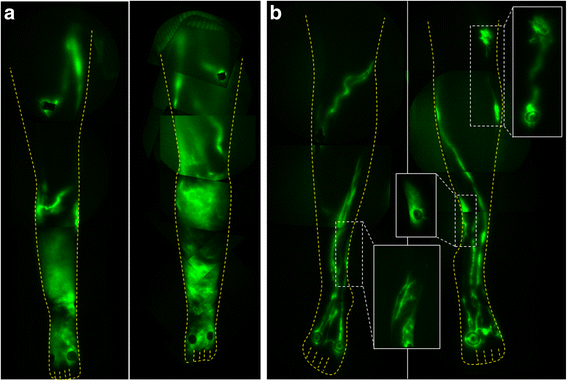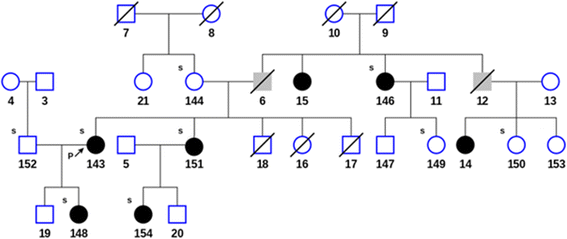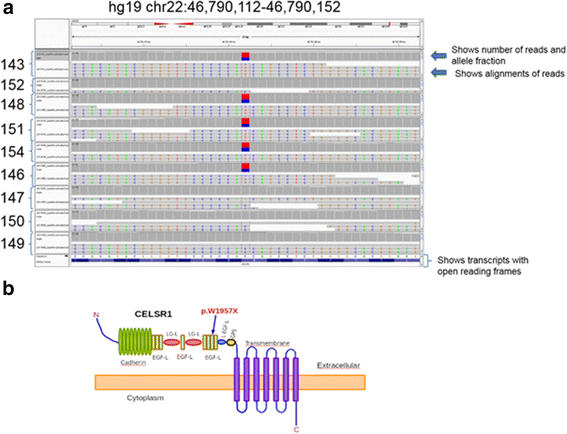A novel mutation in CELSR1 is associated with hereditary lymphedema
- PMID: 26855770
- PMCID: PMC4743364
- DOI: 10.1186/s13221-016-0035-5
A novel mutation in CELSR1 is associated with hereditary lymphedema
Abstract
Background: Biological evidence reported in the literature supports the role of CELSR1 as being essential for valvular function in murine lymphatics. Yet thus far, there have been no variants in CELSR1 associated with lymphatic dysfunction in humans.
Case presentation: In this report, a rare early inactivating mutation in CELSR1 is found to be causal for non-syndromic, lower extremity lymphedema in a family across three generations. Near-infrared fluorescence lymphatic imaging shows that instead of being propelled within the lumen of well-defined lymphatic vessels, lymph moved in regions of both legs in an unusual fashion and within sheet-like structures.
Conclusion: CELSRI may be responsible for primary, non-syndromic lymphedema in humans.
Keywords: Near-infrared fluorescence imaging CELSR1; Planar polarity; Primary lymphedema; Whole exome sequencing.
Figures



References
Publication types
Grants and funding
LinkOut - more resources
Full Text Sources
Other Literature Sources
Molecular Biology Databases
Miscellaneous

